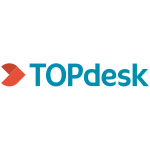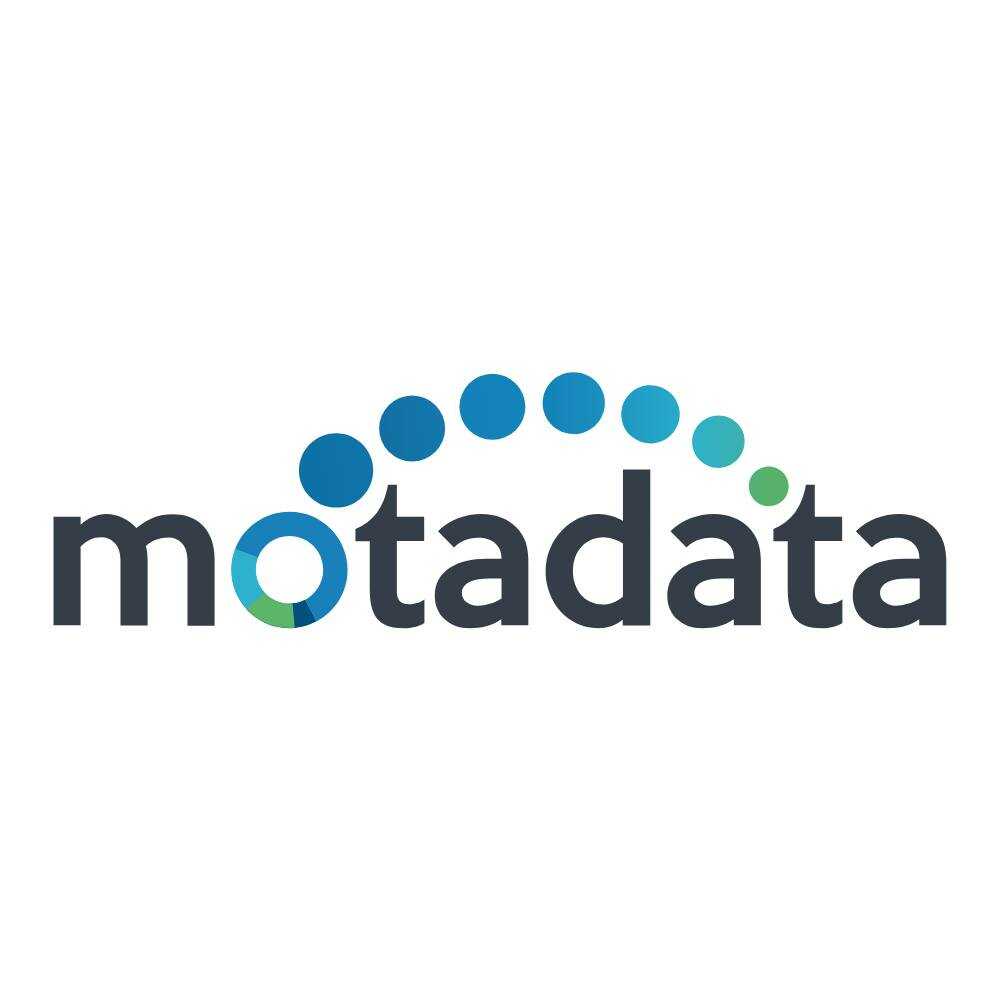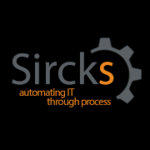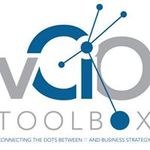Yes, IT Service Management Software may be accessed from various devices and platforms. As long as you have an internet connection, you can use the software on any device, including a computer, mobile phone, or tablet. This increases flexibility and convenience by allowing you to manage and monitor your IT services while on the go. The program is also compatible with a variety of operating systems, making it accessible across a wide range of devices and platforms.
List of 20 Best IT Service Management Software
Slurp Data Services Platform is a solution for creating and deploying data services with ease. Our intuitive interface and robust features make it simple for anyone to design, test, and launch agile services in minutes, both locally and on the cloud...Read More Slurp Data Services Platform
BestatServices Laundry Management Software is the perfect solution to revolutionize your laundry business. Our seamlessly integrated POS system eliminates manual tasks and streamlines processes, taking your operations to new heights of efficiency and...Read More Bestatservices
Atomicwork is a employee experience platform designed to revolutionize workplace productivity. With a user-friendly interface, employees have quick access to information and support without any distractions. By automating 80% of manual IT tasks, Atom...Read More Atomicwork
Narmada solution for MSPs seeking to improve their business operations. With features such as customizable technology and security reviews, vCIO dashboards, shared reports and dashboards, budget management, and more, Narmada empowers MSPs to efficien...Read More Narmada
Dimmy is a dimensioning app for your mobile device. Easily measure SKUs, boxes, pallets, and irregular items with precision and speed. With seamless integration to your ERP, WMS, or TMS, you can say farewell to manual measurements and hello to a more...Read More Dimmy
TeamInsights is a team management software designed to streamline tasks, encourage collaboration, and provide instant analysis of team performance. Featuring a user-friendly interface and robust features, TeamInsights is the ideal solution for maximi...Read More Team Insights
SCC - a leading IT solutions provider with 48 years of expertise in bridging the skills gap in the industry. With our customizable services, we offer efficient and scalable solutions to streamline operations, accelerate digital transformation, and pr...Read More SCC
Discover TOPdesk is a service management solution that streamlines IT support, facilities, and HR processes. Designed with a user-friendly interface, customizable workflows, and advanced reporting features, TOPdesk promises to enhance efficiency, boo...Read More TOPdesk
Mize is a software that incorporates cutting-edge AI and IoT capabilities to enhance customer engagement and streamline service management. Boasting advanced functionalities, it efficiently handles warranties, services, and parts, resulting in improv...Read More Mize
Motadata ServiceOps is a advanced IT monitoring and management tool that utilizes real-time processing, correlation, and intelligent visualization to extract valuable business insights from network and security data. With our solution, your organizat...Read More Motadata ServiceOps
Decidalo is a software designed to streamline CV and skills management while seamlessly integrating with industry standards. It enhances sales performance, optimizes internal processes, and reduces time and effort for IT service providers. By efficie...Read More decidalo
Track-It solution for managing your IT Help Desk. Designed specifically for small to mid-sized businesses, Track-It offers a user-friendly and cost-effective way to handle all your help desk needs. No need for complicated and expensive software - sim...Read More Track-It
HaloITSM is the leading IT Service Management software designed to meet the diverse needs of businesses, regardless of size or industry. With its powerful capabilities, teams can easily collaborate globally and improve service delivery. Transform you...Read More HaloITSM
Patch Connect Plus solution for seamless patch management. Easily integrated with SCCM and Intune, our software ensures effortless system updates and maximum protection. Bid farewell to manual processes and welcome efficient updates, saving time and...Read More Patch Connect Plus
DunesFactory solution for businesses seeking to elevate their marketing strategies. Our state-of-the-art software offers a wide range of tools to assist both small and large enterprises, from selecting the perfect domain to publishing your products...Read More Dunes Factory
smartImager the software solution for effortless Windows deployments and migrations. With its intuitive interface and cutting-edge functionalities, smartImager streamlines hardware-independent imaging. Automated driver capture and installation signif...Read More smartImager
Valuemation Analytics is a robust IT service management solution equipped with pre-defined processes to comply with industry standards. Its efficient features such as change and contract management, along with a self-service portal, make IT operation...Read More Valuemation Analytics
GitLab, your reliable partner for all your application development needs. Our team excels in thorough planning and impeccable execution, providing you with a tailored and effective solution for your specific business requirements. Let us take your un...Read More GitLab
Cherwells project portfolio management software solution for efficient project management. This powerful tool offers advanced features such as strategic alignment, real-time visibility, and progress tracking, allowing you to streamline project planni...Read More Cherwell
vCIOToolbox is solution for virtual CIOs, offering a range of powerful tools for project management, strategic planning, and client engagement. It streamlines IT processes, fosters collaboration, and provides valuable data for enhancing business perf...Read More vCIOToolbox
Learn More About IT Service Management Software
- What Is IT Service Management Software?
- What Are The Recent Trends In IT Service Management Software?
- Benefits Of Using IT Service Management Software
- Important Factors To Consider While Purchasing IT Service Management Software?
- What Are The Key Features To Look For In IT Service Management Software?
- Why Do Businesses Need IT Service Management Software?
- How Much Time Is Required To Implement IT Service Management Software?
- What Is The Level Of Customization Available In IT Service Management Software?
- Which Industries Can Benefit The Most From IT Service Management Software?
- Conclusion
What Is IT Service Management Software?
IT Service Management (ITSM) software is a comprehensive digital solution that simplifies and improves the management and delivery of IT services within a business. It is a strong tool for businesses to efficiently manage their IT infrastructure, assets, and processes, resulting in increased customer satisfaction and business outcomes. At its core, ITSM software functions as a hub for all IT-related tasks, including as incident management, problem resolution, change management, and asset management.
It also incorporates service desk capabilities like ticketing, self-service portals, and knowledge management to guarantee that IT issues are resolved quickly and effectively. This leads to faster reaction times, higher service quality, and less downtime, eventually increasing productivity and cost savings for the firm. One of the primary benefits of ITSM software is its ability to automate regular processes, allowing IT workers to focus on vital business projects.
ITSM software, which includes capabilities such as automated workflows and service catalogs, helps standardize operations and ensure uniform service delivery across the organization. It also has strong reporting and analytics capabilities, which provide useful insights into service performance and opportunities for development. Many ITSM software solutions have connections and cross-platform compatibility, allowing firms to connect with other business systems and apps, making it easier to manage IT services across departments and regions.
When searching for ITSM software, it is critical to evaluate variables like as usability, scalability, and customization to ensure that it matches your organization's specific requirements. In addition, look for security and compliance management tools to protect sensitive data and meet regulatory standards.
What Are The Recent Trends In IT Service Management Software?
The IT service management software industry has shifted significantly in recent years, as enterprises recognize the need of optimizing their IT processes and increasing overall efficiency. This has resulted in the introduction of new trends in the business, making it critical for buyers to stay current on the latest advances.
Buyers of IT service management software should be aware of the following main trends:
1. Cloud-Based Solutions: One of the most significant changes in IT service management software is the shift toward cloud-based solutions. With the advent of remote work and the demand for more flexible and scalable solutions, enterprises are turning to cloud-based service management software to centralize IT processes and track critical data in real time.
2. Artificial Intelligence And Automation: AI and automation are changing the way IT service management works by removing manual and repetitive duties and shortening response time to important issues. With capabilities such as chatbots, machine learning, and predictive analytics, AI-powered IT service management software is becoming increasingly important for streamlining procedures and improving service delivery.
3. Self-Service Capabilities: Self-service capabilities have become essential in IT service management software as the emphasis on automation and efficiency has grown. These capabilities enable end users to access a knowledge base, raise issues, and track their progress without requiring human support, resulting in considerable time and cost savings for the firm.
4. Integration Of Third-Party Tools: As firms employ a broader range of business applications, the requirement for IT service management software that integrates with these tools grows. Buyers should search for solutions that integrate seamlessly with other software, such as project management, CRM, and human resources systems, to ensure a smooth and effective workflow.
5. Mobile-Friendly Interfaces: With the rise of remote work and the widespread usage of smartphones and tablets, IT service management software with mobile-friendly interfaces has become indispensable. These solutions enable users to access vital data, create tickets, and follow progress from anywhere, making it easier to manage IT service requests while on the road.
Benefits Of Using IT Service Management Software
IT Service Management Software, or ITSM software, is a strong solution that enables enterprises to successfully manage their IT services and align them with their business objectives.
This sort of software automates and streamlines the procedures involved in delivering, managing, and maintaining IT services, which has significant advantages for enterprises of any size.
1. Improved Efficiency And Productivity: One of the primary advantages of adopting ITSM software is increased efficiency and productivity. This software improves the efficiency of IT teams by automating manual operations and removing human errors. As a result, production improves and resources are better used.
2. Centralized Service Management: ITSM software creates a single platform for managing all IT services, resources, and assets. This reduces the need for different tools and systems, allowing enterprises to monitor and control their IT services from one location. This centralized method also increases team members' communication and collaboration, resulting in faster and more effective issue solving.
3. Improved Service Quality: ITSM software allows firms to design and adhere to standardized processes and procedures, which leads to higher service quality. This guarantees that all IT services are delivered consistently and in accordance with best practices, satisfying the needs and expectations of both the business and its customers.
4. Cost Savings: By automating procedures and streamlining operations, ITSM software allows firms to save money in the long run. It removes the need for human labor while decreasing the likelihood of errors and rework, resulting in significant cost savings for enterprises.
5. Improved Customer Satisfaction: ITSM software enables firms to respond quickly and effectively to IT issues, resulting in higher customer satisfaction. This software assists organizations in developing a great reputation and retaining consumers by improving service quality, responding faster, and communicating more effectively.
6. Comprehensive Reporting And Analytics: ITSM software offers detailed reporting and analytics, allowing for insights into many elements of IT service management. This data can assist firms in identifying areas for improvement, making data-driven decisions, and driving continual improvement in service delivery.
7. Scalability: As firms expand and their IT requirements change, ITSM software can readily adapt to meet those demands. This makes it a cost-effective alternative for businesses because they don't have to invest in new software every time their operations grow.
Important Factors To Consider While Purchasing IT Service Management Software?
IT Service Management software is a critical tool for firms to properly manage their IT services and respond to consumer demands. It streamlines operations, shortens response times, and increases overall customer satisfaction. With so many options on the market, it might be difficult to choose the best IT Service Management software.
To help you make an informed selection, here are some key considerations to consider when selecting IT Service Management software.
1. Functionality: Before investing in any IT Service Management software, it is critical to assess your organization's unique requirements and choose one that meets those demands. Determine the features and functionalities required for your business and check that the software includes them.
2. User-Friendly Interface: A user-friendly interface is essential for all applications, including IT Service Management. It should be intuitive, simple to use, and require little training for your workforce. Complex software can lead to low adoption rates and reduced productivity.
3. Integration Capabilities: IT Service Management software should be compatible with other tools and apps used by your firm. This ensures a smooth flow of information and eliminates the need to switch between several platforms.
4. Scalability: Your organization's needs may change over time, therefore it is critical to choose software that can expand appropriately. Check the pricing structure and any limits on the number of users or features to ensure it suits your changing requirements.
5. Customization Options: Because every organization has its own set of processes and workflows, the software should be customizable to meet your specific needs. Look for possibilities to adjust fields, workflows, and reports based on your individual requirements.
6. Mobile Accessibility: In today's fast-paced environment, being able to use IT Service Management software while on the road might be game changer. Look for software that has a mobile app that is available via a web browser so that your staff can stay connected and productive even when they are not in the office.
7. Security Measures: Given the growing number of cyber threats, data security should be a key focus. Check that the software includes strong security features to protect your sensitive information and avoid data breaches.
8. Customer Support: Technical troubles and inquiries are unavoidable when using any product. Look for suppliers who give complete customer assistance, such as phone, email, and live chat, so that any concerns may be resolved swiftly.
9. Pricing: Small and medium-sized enterprises may need to make a large investment in IT Service Management software. Before making a purchase, thoroughly analyze the pricing structure and consider any hidden charges, such as add-ons or maintenance fees, to avoid unpleasant surprises later on.
10. Customer Reviews: Finally, read reviews and seek input from other firms that have utilized the product. It can provide vital information into the software's performance, usability, and customer support, allowing you to make an informed selection.
What Are The Key Features To Look For In IT Service Management Software?
When it comes to choosing the proper IT Service Management Software for your business, there are a few crucial features to consider. These capabilities can make a significant impact in optimizing your IT procedures, increasing productivity, and improving customer happiness.
Before you buy, here are the main things to look for in IT Service Management Software:
1. Ticketing System: A strong ticketing system is required for any IT Service Management Software. It should be able to automatically sort and prioritize tickets based on their urgency and impact, as well as track and manage all open and resolved issues.
2. Automation Capabilities: Look for software that can automate normal and repetitive operations like password reset, system upgrades, and patch management. This will considerably minimize the effort and allow your IT personnel to focus on more important responsibilities.
3. Knowledge Base: A decent IT Service Management Software should include a knowledge base that contains all troubleshooting instructions, FAQs, and other pertinent information. This will allow your support team to respond swiftly to typical concerns, resulting in faster resolution and happy customers.
4. Self-Service Portal: A self-service portal allows your users to resolve common IT issues without having to wait for support. This functionality can save time for both your support crew and customers, hence increasing overall efficiency.
5. Asset Management: Keeping track of all of your hardware and software assets is critical to keeping a healthy IT infrastructure. Make sure the IT Service Management Software you choose includes a powerful asset management capability that allows you to track, manage, and upgrade all assets in real time.
6. Integration Capabilities: Your IT Service Management Software must work seamlessly with other systems and applications in your firm, such as CRM or HR software. This will provide a smooth flow of data and information between departments, boosting collaboration and efficiency.
7. Reporting And Analytics: Look for software that includes reporting and analytics capabilities to acquire important insights into your IT processes. This data can be used to identify areas for improvement, optimize resource allocation, and monitor performance measures.
8. Mobile Compatibility: In today's fast-paced company climate, having access to IT Service Management Software while on the road is critical. Look for software that has mobile compatibility, so your staff can access and manage tickets and tasks from any device.
Why Do Businesses Need IT Service Management Software?
In today's increasingly technologically driven company landscape, IT service management has become critical to guaranteeing smooth operations and effective service delivery. This is where IT service management software comes in handy. This program enables businesses to successfully manage, monitor, and enhance their IT services, systems, and processes. One of the primary reasons that businesses want IT service management software is to streamline their IT processes.
The program automates regular activities, allowing IT personnel to concentrate on more important and strategic projects. This not only improves efficiency and production, but also lowers the danger of human error, resulting in better service delivery. Furthermore, IT service management software helps firms keep organized and in control of their IT assets and resources.
Businesses can simply keep track of their gear, software, licenses, and configurations with tools such as asset management and configuration tracking, assuring improved control and compliance. Furthermore, IT service management software includes powerful reporting and analytics features that provide useful insights into IT service performance. This allows firms to make data-driven decisions while continuously improving their IT operations.
It also aids in the identification of possible issues and their resolution, hence reducing downtime and disruptions. Another essential component of IT service management software is its ability to improve communication and collaboration within a company. Ticketing systems and real-time messaging enable staff to readily report concerns and collaborate to resolve them, resulting in faster issue resolution and higher customer satisfaction.
Finally, IT service management software enables firms to adapt to the ever-changing technological world. With the growing use of cloud-based services and the demand for remote work, this software provides solutions for successfully managing these complex IT systems.
How Much Time Is Required To Implement IT Service Management Software?
The time required to integrate IT Service Management (ITSM) software varies substantially based on the program selected, the complexity of your organization's IT infrastructure, and the level of customization necessary. Most ITSM software providers predict a 6-12 week deployment timeframe, but this can vary depending on your specific requirements. Before getting into a specific schedule, keep in mind that the installation process is ongoing and involves continual maintenance and modifications.
Let's look at the important elements that influence the time necessary to adopt ITSM software.
1. Software Selection: The first step in any ITSM installation is to select the appropriate software for your organization. This procedure can take anything from a few weeks to a few months, depending on the size of your firm and the extent of your evaluation. To guarantee a successful installation, take into account your organization's needs and goals, as well as the characteristics and capabilities of various software solutions.
2. Pre-Implementation Preparation: Before the implementation process begins, a few critical tasks must be accomplished. This may include educating your IT team, forming a project team, and developing specific project objectives and timetables. Depending on the complexity of your company, this preparation step could last anywhere from a few days to a few weeks.
3. Data Migration: When switching from a current ITSM system to a new one, moving data and configurations might be time-consuming. This stage can take a few days or several weeks, depending on the amount of data to be migrated and the complexity of your current system.
4. Customization And Configuration: One of the most significant advantages of ITSM software is its flexibility to be tailored to your organization's specific requirements. However, the customization and setup phase can significantly extend the entire implementation timeline. The length of this stage is determined by the complexity and level of customization required, but it often takes between a few weeks and a few months.
5. User Training: Once the program is configured and ready to use, it is critical to train your team on how to utilize it efficiently. This can take anywhere from a few days to several weeks, depending on the software's complexity and the number of your team.
6. Go-Live And Post-Implementation: The program is now available for use by your IT team and other personnel. It is critical to closely monitor the system over the first several weeks following adoption and make any necessary changes. This level may also require ongoing maintenance and updates.
What Is The Level Of Customization Available In IT Service Management Software?
IT service management software is a strong tool that allows firms to streamline and optimize their IT operations. One important characteristic of this program is the degree of customization it provides. In general, IT service management software offers three levels of customization: basic, advanced, and fully customizable. At its most basic, IT service management software offers pre-configured templates and workflows that may be quickly customized to meet a company's specific requirements.
This enables for some level of customisation without requiring substantial coding or technical skills. It is best suited for firms with simple, typical operations that do not require a large degree of modification. Advanced customization options are available for individuals seeking greater freedom and control over their workflows. This level of customisation enables the creation of custom fields, forms, and processes to match the unique requirements of a business.
This typically necessitates technical knowledge or support from the program provider. It is best suited for firms with complex or unique operations that cannot be accommodated by simple customisation choices. Finally, some IT service management software vendors provide completely configurable solutions. This level of customization gives you entire control over the software, including the ability to build bespoke modules, interfaces, and integrations. This option necessitates a high level of technical proficiency and can be time-consuming and costly.
It is ideal for larger enterprises with specific and highly customized IT service management requirements. Businesses must thoroughly examine their customisation requirements before selecting an IT service management software that provides the necessary amount of modification. Before making a selection, it is also recommended that you consult with a software professional or request a demo to fully grasp the customization capabilities of the software. Businesses can enhance their IT processes and improve overall productivity by using the appropriate level of customization.
Which Industries Can Benefit The Most From IT Service Management Software?
Numerous sectors might benefit from integrating IT Service Management (ITSM) software into their operations. ITSM software may assist small firms and large corporations optimize operations, improve communication, and increase overall efficiency.
The following industries can benefit the most from ITSM software:
1. Information Technology: It's no surprise that the information technology business is one of the biggest beneficiaries of ITSM software. With the ongoing advancement of technology, IT departments must handle a diverse spectrum of hardware, software, and applications. ITSM software can assist IT teams in effectively managing and maintaining these systems, tracking assets, and handling IT requests and incidents, leading in increased productivity and customer satisfaction.
2. Healthcare: The healthcare business relies heavily on technology, from electronic health records to telemedicine. This dependence emphasizes the need of IT service management in ensuring the correct maintenance and operation of these systems. Healthcare providers can use ITSM software to manage and monitor their complex IT infrastructure, ensuring that patient care is not disrupted and compliance criteria are followed.
3. Education: As educational institutions embrace technology, they have issues managing a diverse range of devices and apps. ITSM software can help schools and universities manage their IT assets more efficiently, automate operations, and give support to students, teachers, and staff. ITSM software allows educational organizations to focus on providing great education without worrying about IT disruptions.
4. Financial Services: The financial services industry works with sensitive data and must adhere to stringent rules. ITSM software may help financial organizations maintain a secure IT environment, track and manage assets, and respond rapidly to any possible incidents or breaches. It also improves departmental communication, resulting in a more seamless client experience.
5. Government: Government agencies at all levels must manage massive volumes of data, respond to public queries, and guarantee essential systems function properly. ITSM software can help them streamline IT procedures, increase communication, and deliver more effective support to residents and employees. It also helps to maintain security and meet compliance requirements.
Conclusion
To summarize, investing in high-quality IT service management software is critical for any firm trying to streamline and optimize its IT operations. With so many features and capabilities available, buyers must carefully consider their needs and select software that meets their specific requirements. Buyers should evaluate ease of use, scalability, integrations, and pricing when exploring prospective solutions to ensure they get the most out of their investment.
It's also crucial to look for a software vendor who provides dependable customer service and regular upgrades to keep the program effective and up to date. Businesses that deploy comprehensive IT service management software can benefit from lower downtime, increased productivity, and more customer satisfaction. It also enables more efficient IT asset management, improved team communication, and better tracking of service requests and incidents.
We hope you found this buyer's guide useful in making an informed selection about IT service management software. With the proper solution in place, your IT staff can function more effectively and efficiently, allowing your company to prosper in today's digital environment.
IT Service Management Software FAQ's
Can IT Service Management Software Be Accessed Across Multiple Devices And Platforms?
Is IT Service Management Software Future-Proof And Adaptable To Emerging Technologies Like AI, Blockchain Or IoT?
Yes, most IT Service Management (ITSM) software is intended to be future-proof and adaptable to new technologies such as AI, blockchain, and IoT. This is accomplished by constantly updating and improving the software, as well as integrating new tools and capabilities. Given the continuous growth of technology, ITSM software must be adaptive in order to remain relevant and efficient in managing IT services.
Is There A Free Trial Offered To Assess IT Service Management Software Before Committing?
Yes, many IT service management software suppliers provide a free trial period for potential customers to evaluate their products before making a purchase. This enables organizations to examine the software's features, functionality, and user experience to ensure it fulfills their requirements before making a cash commitment. It's critical to use these trials to make an informed decision and select the best IT service management software for your business.
Does IT Service Management Software Offer Data Security Features And Meet Regulatory Compliance Standards?
Yes, IT Service Management Software contains data security capabilities to protect sensitive information and ensure compliance with regulatory standards. It uses encryption, firewalls, and access controls to keep data confidential, secure, and accessible. It also assists firms in meeting industry-specific laws such as GDPR, HIPAA, and ISO 27001. This enables businesses to administer services while maintaining data security and regulatory compliance, providing peace of mind.
Can IT Service Management Software Integrate Seamlessly With Existing Tools And Platforms?
Yes, most IT Service Management software is designed to work easily with other tools and platforms. ITSM software may be readily integrated with your organization's existing systems thanks to advanced capabilities such as API interface and compatibility with popular applications such as Microsoft SharePoint and Salesforce. This creates a more simplified and effective workflow while also maximizing the benefits of both your existing tools and the ITSM software.






















